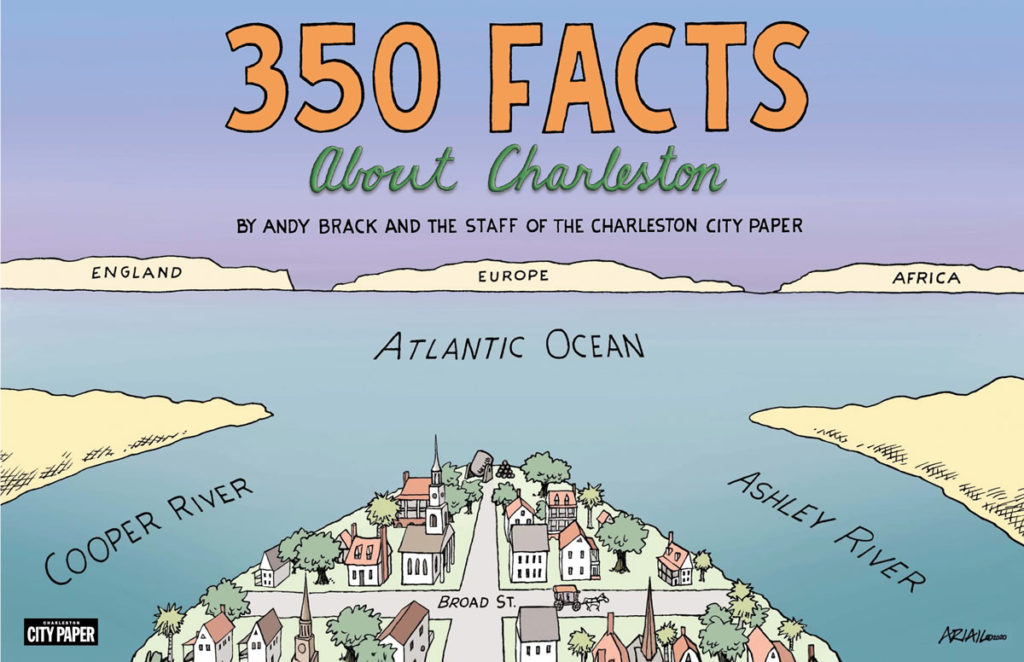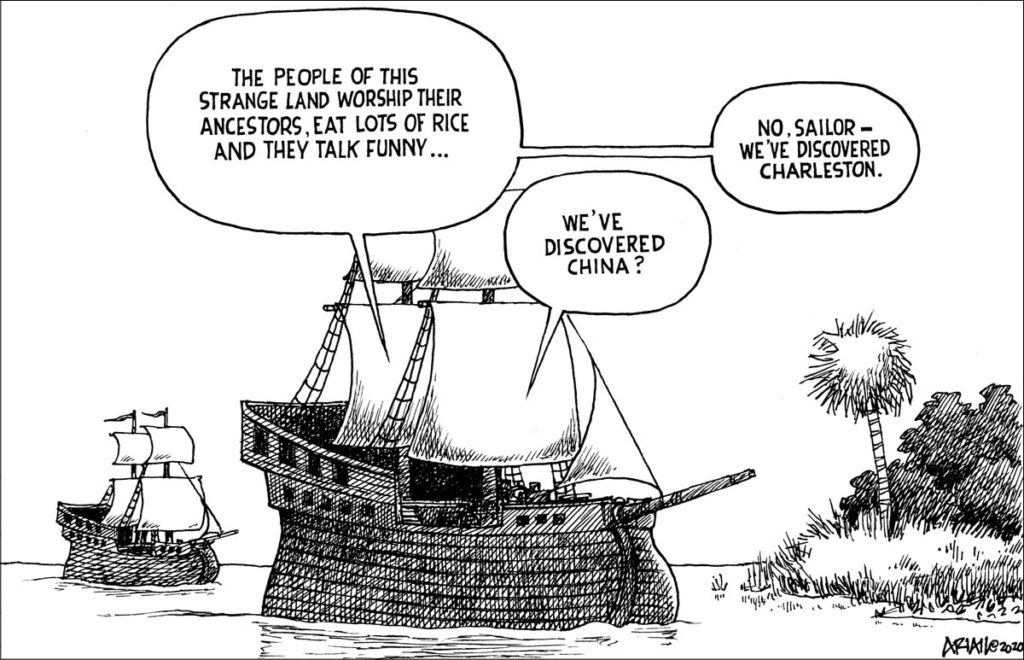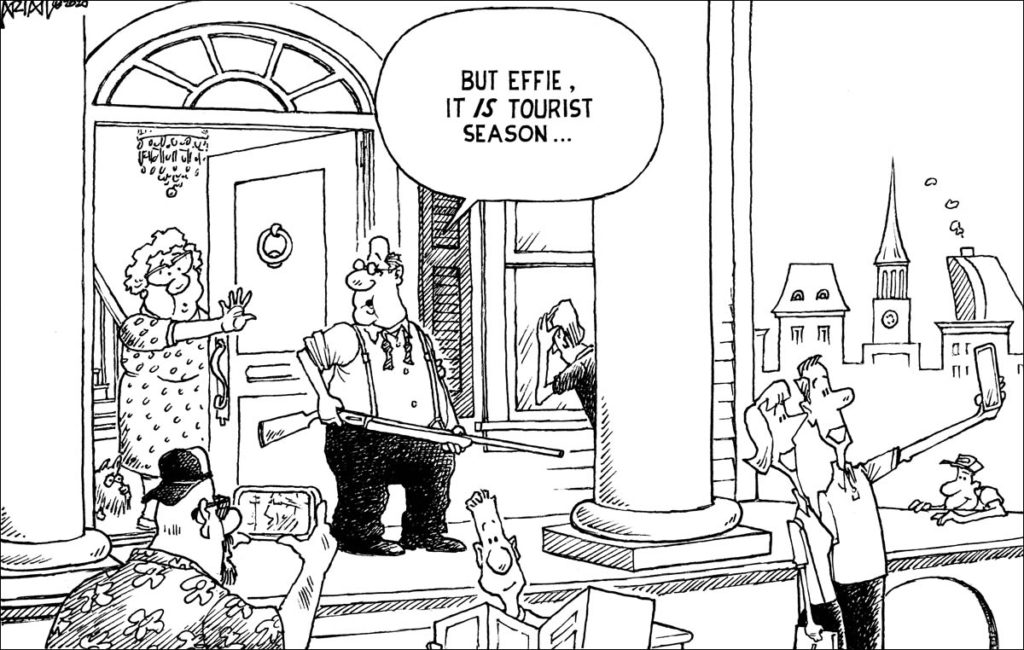Celebrate Charleston’s 350 years of history by reveling in 350 facts about the Holy City. Great book from the staffers at the Charleston City Paper.


Lots of facts.
350, in fact. The staff at the Charleston City Paper pulled together lots of information on Charleston firsts, wars, food, people, buildings, architecture, statistics, civil rights and art. We’ve even got something cool about cane heads.
Fact #3: Birthplace of golf in America
Golf in America got its start in 1786 in Charleston with the formation of the South Carolina Golf Club, whose members reportedly played on a bustling rectangle of land between what we know as Charleston and Beaufain streets and bounded by Rutledge and Barre streets.

Snarky cartoons.
Nationally-syndicated cartoonist Robert Ariail of Camden provided cover art and snarky chapter cartoons to illustrate research compiled by staffers of the Charleston City Paper to celebrate 350 years of the Holy City’s history.
Fact #14: Nation’s first public statue
Charleston County Judicial Center on Broad Street is the home to an 18th-century marble statue of William Pitt (1708-1778), first Earl of Chatham, that is believed to be “the nation’s first public statuary, one of the grandest tributes that survives from this nation’s colonial era.”

Imagine living in Charleston 350 years ago. No air-conditioning. No bug spray. No smart phones. No grocery stores. No cars. It would have been a tough, hard life inflicted by pests, storms, turmoil, and cloying heat and humidity. Just go outside any July morning and don’t go back into comfort for 24 hours. You’ll quickly find out how it was. (An easier, less sweaty way to get the experience is to visit Charles Towne Landing State Park for a couple of hours.)
Despite all of the factors stacked against them, settlers, along with enslaved Africans, came and chopped trees, made forts, planted fields, explored and fanned out to discover lush riches in the New World. The Carolinas colony, started as a business venture, experienced success when landholders figured out they could grow rice and indigo. By the time 100 years passed, Charleston had become rich — a leading colonial city of its time with a long list of colonial firsts — from the first library and first fire insurance company to the first performances of theatre and opera.
— From the Introduction, by Andy Brack